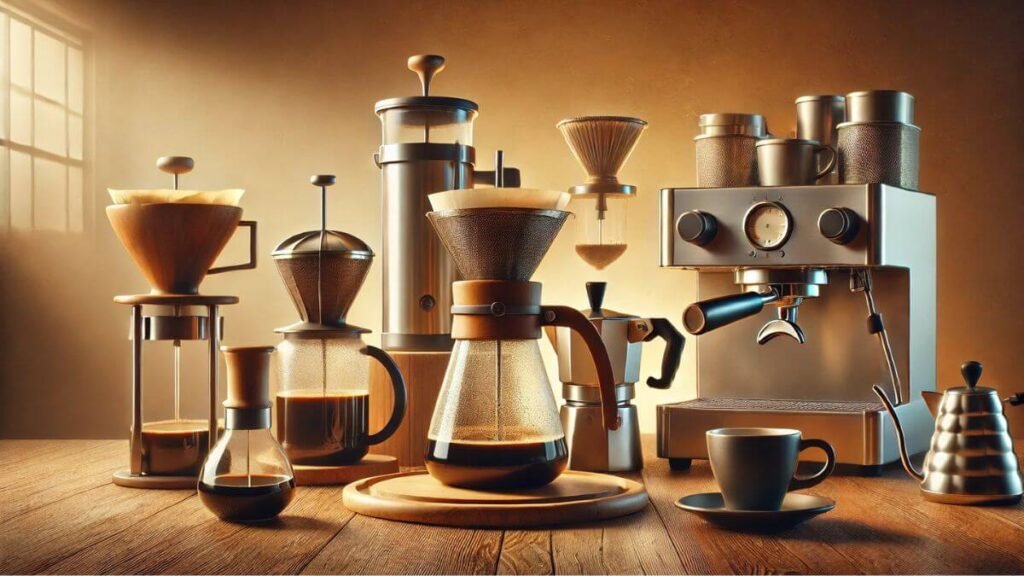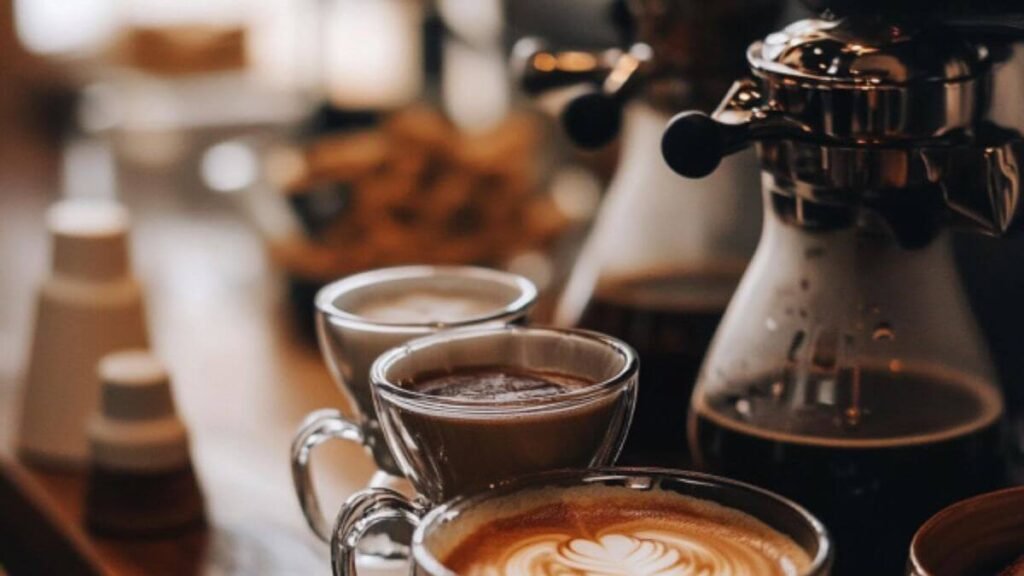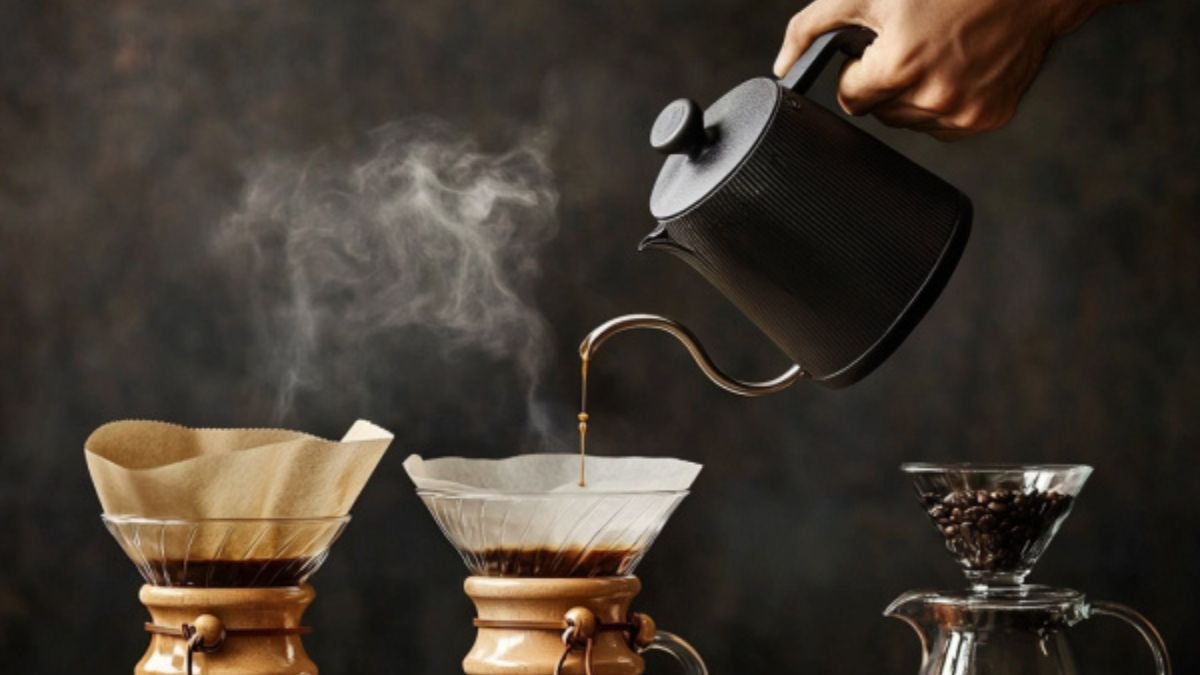When it comes to preparing coffee, there is no one-size-fits-all approach. The world of coffee preparation is vast and diverse, with many methods available, each offering its own unique flavor profile and experience. Whether you’re looking for a quick caffeine boost or a more elaborate brewing ritual, understanding the different coffee preparation methods can help you find the perfect way to brew your daily cup. In this article, we’ll explore some of the most popular coffee brewing methods, highlighting their features and how they can affect the taste of your coffee.
1. Drip Coffee Maker: The Classic Choice
What It Is:
The drip coffee maker is one of the most commonly used brewing methods, especially in households and offices. This method involves filling a filter with ground coffee and allowing hot water to drip through it, extracting the coffee flavors before collecting in a carafe below.
Pros:
- Convenience: It’s easy to use and relatively fast.
- Consistency: Drip coffee makers provide consistent results every time, making them perfect for daily coffee drinkers.
- Capacity: These machines can brew multiple cups at once, which is ideal for households or offices.
How It Works:
- Add water to the machine’s reservoir.
- Place a coffee filter in the basket.
- Add ground coffee to the filter.
- Start the machine, and let the water heat and drip through the grounds.
Taste Profile:
Drip coffee typically has a balanced, smooth flavor that isn’t overly strong or weak. It’s perfect for those who enjoy a clean cup of coffee that isn’t too overpowering.

2. French Press: A Bold, Rich Coffee
What It Is:
The French press, also known as a press pot or plunger pot, is a manual brewing method that involves steeping coffee grounds in hot water before pressing the grounds with a metal plunger to separate them from the brewed coffee.
Pros:
- Rich Flavor: French press coffee is known for its bold, full-bodied taste.
- Customization: You can control the brewing time and coffee-to-water ratio to adjust the strength of the coffee.
- Simplicity: No need for electricity or paper filters.
How It Works:
- Boil water and let it cool slightly (ideal brewing temperature is around 200°F/93°C).
- Add coarsely ground coffee to the French press (typically a 1:15 ratio of coffee to water).
- Pour the hot water over the coffee grounds, ensuring all the grounds are saturated.
- Stir gently, place the lid on the French press, and let the coffee steep for about 4 minutes.
- Press the plunger down slowly and serve.
Taste Profile:
The French press method produces a coffee that is rich, full-bodied, and has more oils and flavors from the grounds compared to other methods, making it ideal for those who like a strong, aromatic brew.
3. Espresso: The Powerhouse of Coffee
What It Is:
Espresso is the foundation for many other coffee drinks, including lattes, cappuccinos, and mochas. This method uses high pressure to force hot water through finely-ground coffee, creating a small but concentrated shot of coffee with a strong flavor and rich crema.
Pros:
- Quick: Espresso is brewed in just 20-30 seconds.
- Intensity: Espresso provides a strong, bold flavor due to its high concentration.
- Base for Other Drinks: It’s the base for many coffee beverages, such as lattes, cappuccinos, and macchiatos.
How It Works:
- Preheat the espresso machine and grind the coffee beans finely.
- Pack the coffee grounds into the portafilter and tamp them evenly.
- Lock the portafilter into the machine and start the extraction process.
- The espresso will be ready in 20-30 seconds, and you’ll see a layer of crema on top.
Taste Profile:
Espresso is intense and concentrated with a bold, slightly bitter taste. It’s perfect for coffee enthusiasts who appreciate a stronger, more robust coffee experience.
4. Pour-Over: The Art of Slow Brewing
What It Is:
Pour-over brewing is a manual method where hot water is poured slowly over coffee grounds, allowing the water to extract the coffee flavors gradually. This method is often used for single cups of coffee and is popular among coffee aficionados.
Pros:
- Control: You have full control over the pouring technique, water temperature, and brewing time.
- Clean Taste: The pour-over method produces a coffee that is clean and crisp, with subtle flavors.
- Ritualistic: It’s a slower, more mindful brewing process, perfect for those who enjoy the art of coffee making.
How It Works:
- Place a paper filter in a pour-over dripper (like the Chemex or V60) and add ground coffee (medium grind).
- Boil water and let it cool to about 200°F/93°C.
- Pour a small amount of water over the coffee grounds to “bloom” and allow them to expand for 30 seconds.
- Slowly pour the rest of the water over the coffee in a circular motion, allowing the water to drip through.
- Let the coffee drip through completely before serving.
Taste Profile:
Pour-over coffee is known for its clean, crisp flavor and a smooth mouthfeel. It’s a great option for those who want to savor the subtle notes of their coffee beans.
5. AeroPress: The Versatile, Portable Coffee Maker
What It Is:
The AeroPress is a small, portable coffee brewing device that uses air pressure to push hot water through coffee grounds. It’s known for producing a cup that’s rich and smooth, with a low acidity.
Pros:
- Portable: It’s small and lightweight, making it ideal for travel or camping.
- Fast: Brewing time is typically around 2 minutes.
- Customizable: You can adjust the coffee-to-water ratio and brewing time for a more personalized cup.
How It Works:
- Insert a paper filter into the AeroPress filter cap and attach it to the brewing chamber.
- Add finely ground coffee to the AeroPress (about 14-18g of coffee for 200-250ml of water).
- Pour hot water (around 200°F/93°C) into the AeroPress, stir, and let it steep for 30 seconds.
- After steeping, press the plunger down slowly to extract the coffee.
- Enjoy your freshly brewed coffee!
Taste Profile:
AeroPress coffee is typically smooth, rich, and low in acidity. It’s similar to espresso but with a less intense flavor, making it a great option for those who want a quick but flavorful coffee.
6. Moka Pot: The Italian Classic
What It Is:
The Moka pot is a stovetop coffee maker that brews coffee by passing boiling water pressurized by steam through ground coffee. It’s a staple in many Italian households and is known for producing a strong, espresso-like coffee.
Pros:
- Affordable: Moka pots are relatively inexpensive compared to espresso machines.
- Strong Coffee: It produces a rich, bold coffee with a strong flavor, similar to espresso.
- Traditional: The Moka pot offers a nostalgic, old-school way to brew coffee.
How It Works:
- Fill the bottom chamber of the Moka pot with water up to the safety valve.
- Place ground coffee into the filter basket (medium grind).
- Assemble the Moka pot and place it on the stove over medium heat.
- As the water heats up, it will create steam pressure that pushes water through the coffee grounds, producing a rich, concentrated coffee.
- When the bubbling sound stops, your coffee is ready!

Taste Profile:
Moka pot coffee is strong, intense, and often slightly bitter, similar to espresso but with a more textured body.
Conclusion: Finding Your Perfect Brewing Method
The world of coffee brewing methods is vast, and there’s no one “best” way to prepare coffee. It all comes down to your personal preferences—whether you like a quick espresso shot or enjoy the slow ritual of a pour-over. From the convenience of a drip coffee maker to the bold intensity of a French press or espresso, there is a method suited for every coffee lover.
Experiment with different brewing techniques, and discover which one yields the perfect cup for your taste. The journey of finding your favorite brewing method is part of the magic of coffee itself.
Frequently Asked Questions (FAQ)
1. What’s the difference between an espresso and a Moka pot coffee?
Espresso is made under high pressure, while a Moka pot uses steam to create pressure, resulting in a similar strong coffee but with a more textured body and less intensity than true espresso.
2. How can I make my coffee taste less bitter?
To reduce bitterness, use slightly coarser coffee grounds, avoid over-brewing, and experiment with lower-acid beans. Also, adding milk or sweeteners can help balance the flavor.
3. Which coffee preparation method is the easiest?
The drip coffee maker is the easiest and most convenient method, as it requires little effort and produces consistent results.
4. Can I use ground coffee in an AeroPress?
Yes, the AeroPress works best with freshly ground coffee. You can use a fine grind, similar to table salt.
5. What is the best brewing method for strong coffee?
Espresso, Moka pot, and French press methods tend to produce the strongest coffee due to their high concentration of coffee grounds and brewing techniques.
